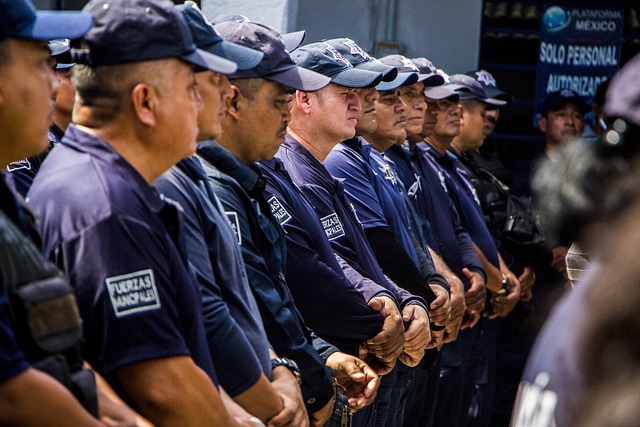Rapid Response Teams (RRTs), comprising experts from various fields, are vital in emergency management, offering immediate solutions during crises like natural disasters or political uncertainty. Their specialized training, focused on scenarios such as active shooters and cyberattacks, is crucial for effective response. RRTs enhance regional resilience by coordinating rescue efforts, deploying resources swiftly, and implementing strategic plans to minimize damage. Tailored services for political leaders, emphasizing continuous training and integrated communication systems, are essential for swift decision-making during emergencies. Collaboration between local authorities, first responders, and national agencies further strengthens their capabilities, ultimately boosting community preparedness and resilience.
In today’s fast-paced world, rapid response teams are crucial assets for effective emergency management and immediate threat neutralization. These specialized groups play a pivotal role in safeguarding communities, particularly in political contexts where swift action can prevent escalating crises. This article explores the multifaceted operations of rapid response teams, delving into their specialized training, collaborative networks, enhanced communication systems, and successful case studies involving political leaders. Understanding these elements is essential for optimizing crisis management strategies.
Understanding Rapid Response Teams: Their Role in Emergency Management
Rapid Response Teams (RRTs) are specialized groups designed to provide immediate and effective solutions during emergencies or threats. These teams play a pivotal role in emergency management, offering crucial services that can significantly impact crisis outcomes. RRTs are often composed of highly trained professionals from various disciplines, including law enforcement, firefighting, medical services, and disaster management experts. Their primary objective is to assess, contain, and mitigate risks within the shortest possible time frame.
In times of political uncertainty or natural disasters, these teams act as a safeguard for communities and political leaders alike. They swiftly deploy essential resources, coordinate rescue efforts, and implement strategic plans tailored to specific threats. The efficiency and effectiveness of RRTs are vital in minimizing damage, saving lives, and ensuring public safety. With their expertise and rapid deployment capabilities, they contribute significantly to the overall resilience and security of a region, making them indispensable assets in modern emergency management strategies.
The Importance of Specialized Training for Team Members
In the high-pressure environment of emergency response, specialized training is paramount for rapid response teams. Members equipped with skills tailored to specific threats—be it active shooter scenarios, natural disasters, or cyberattacks—can make immediate, effective decisions. This targeted preparation ensures that each team member knows their role and can contribute optimally during crises, ultimately enhancing the overall efficiency of the response.
For political leaders overseeing these teams, prioritizing specialized training means fostering a culture of readiness and resilience. It empowers responders to handle diverse emergencies with confidence, ensuring public safety and restoring order swiftly. Services tailored for political leaders should focus on continuous training programs that keep these critical assets prepared and ready to deploy at a moment’s notice.
Building a Network: Collaboration with Local and National Authorities
Rapid response teams play a vital role in ensuring immediate threat neutralization and effective emergency management. Building a robust network is essential to achieving this, and collaboration forms the cornerstone of such an initiative. Local authorities, first responders, and national agencies must work together seamlessly to create a coordinated system. This includes establishing clear communication channels, sharing resources, and developing standardized protocols for rapid deployment.
By fostering partnerships, these entities can enhance their collective capabilities, ensuring a swift and efficient response during crises. Services for political leaders often require such collaborative networks to make informed decisions quickly and effectively manage resources across jurisdictions. Effective collaboration not only enhances preparedness but also strengthens the overall resilience of communities.
Enhancing Communication Systems for Instant Threat Assessment
In today’s digital era, enhancing communication systems is paramount for rapid response teams aiming to neutralize immediate threats. Seamless information exchange between emergency services, political leaders, and the public is crucial for instilling confidence and ensuring swift action during crises. Advanced technologies, such as real-time data analytics platforms and secure messaging apps, enable instant threat assessment by providing up-to-the-minute insights into incident locations, severity, and potential impact.
These integrated communication systems facilitate better coordination among various stakeholders, including first responders, healthcare providers, and government agencies. By centralizing information and streamlining decision-making processes, these platforms empower political leaders to make informed choices quickly, ultimately enhancing the overall response efficiency and effectiveness during emergencies. Services tailored for political leaders play a vital role in this infrastructure by providing them with accessible, secure, and comprehensive situational awareness, enabling them to guide their communities through unprecedented challenges.
Case Studies: Successful Rapid Response in Political Contexts
In recent years, rapid response teams have proven invaluable in political contexts, demonstrating their ability to mitigate crises and ensure stability during high-stakes situations. A notable example is the successful deployment of specialized units during political protests or civil unrest. These teams are equipped with advanced training and resources, allowing them to swiftly assess and address threats, such as violent clashes or security breaches, thereby safeguarding political leaders and key infrastructure.
Case studies from various countries highlight the effectiveness of these strategies. For instance, in regions plagued by political instability, rapid response teams have been instrumental in protecting high-profile officials during high-risk events, ensuring their safety and facilitating peaceful resolutions. The efficiency and expertise of these services for political leaders have led to increased public confidence and a more responsive security apparatus, ultimately contributing to a more stable political environment.
Rapid response teams are indispensable assets in modern emergency management, particularly in political contexts where immediate threat neutralization can prevent escalation. By leveraging specialized training, robust communication systems, and collaborative networks with local and national authorities, these teams ensure swift and effective action. As seen through successful case studies, the implementation of such services for political leaders not only safeguards public safety but also fosters stability and confidence in democratic institutions. Investing in rapid response capabilities is therefore a strategic move towards building resilient societies capable of tackling complex threats promptly.
